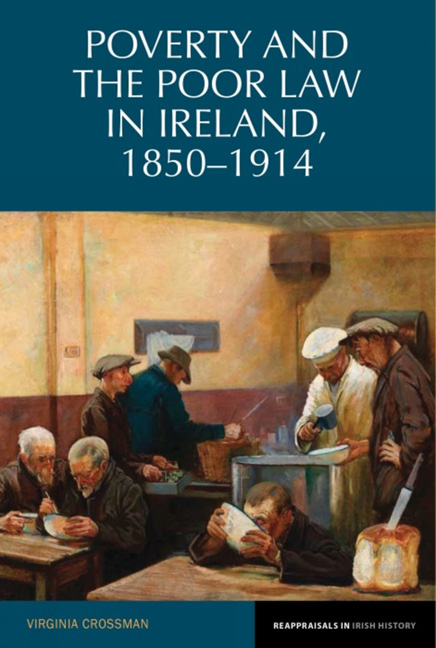Book contents
- Frontmatter
- Contents
- List of Figures
- List of Tables
- List of Maps
- Acknowledgements
- Introduction
- Chapter 1 Concepts of Poverty and Poor Relief
- Chapter 2 Context and Trends
- Chapter 3 Outdoor Relief
- Chapter 4 The Workhouse
- Chapter 5 The Sick, Infirm and Lunatics
- Chapter 6 Single Mothers and Prostitutes
- Chapter 7 Mendicancy and Vagrancy
- Conclusion
- Note on statistics and Sources
- Bibliography
- Index
Chapter 7 - Mendicancy and Vagrancy
- Frontmatter
- Contents
- List of Figures
- List of Tables
- List of Maps
- Acknowledgements
- Introduction
- Chapter 1 Concepts of Poverty and Poor Relief
- Chapter 2 Context and Trends
- Chapter 3 Outdoor Relief
- Chapter 4 The Workhouse
- Chapter 5 The Sick, Infirm and Lunatics
- Chapter 6 Single Mothers and Prostitutes
- Chapter 7 Mendicancy and Vagrancy
- Conclusion
- Note on statistics and Sources
- Bibliography
- Index
Summary
Under the poor law system, relief was both targeted at and largely limited to the settled poor. Poor law guardians and officials sought to restrict relief as much as possible to local residents, regarding applicants who came from outside the union with suspicion and, in some cases, hostility. This is particularly evident with regard to vagrants. Vagrancy was perceived as a social problem from the early modern period. Widely associated with crime and social disorder, the mobile poor were viewed as dangerous and subversive. Vagrants were the epitome of the undeserving poor; people who could work but chose not to. Having opted out of settled society, vagrants represented a challenge and a threat to its culture and values. This was particularly evident in Ireland where attachment to land and locality was intense. Attitudes to vagrancy in Ireland were in many ways typical of those displayed throughout Europe and north America, where ‘institutionalization and incarceration’ were widely seen as the most appropriate responses. Legislation introduced in the eighteenth century empowered Irish local authorities to licence settled beggars, and confine vagrants and wandering beggars in houses of industry. At the same time, mendicity associations sought to reduce visible begging by providing aid for the deserving poor whilst denying and thus discouraging the undeserving. It was not until 1847, however, that legislation against vagrancy was introduced in Ireland following the Poor Relief Extension act. The Irish poor law authorities were determined to avoid the English practice of providing separate wards to accommodate vagrants, arguing that casual wards would institutionalise vagrancy in Ireland. Vagrants were not accommodated separately or treated differently from other categories of paupers, although, since they generally stayed for one night only, they were kept in probationary wards and rarely admitted to the main body of the workhouse.
Over the course of the nineteenth century, the terminology used to categorise the mobile poor changed. In the early years of the Irish poor law, vagrancy was closely linked with mendicancy and begging. By the end of the nineteenth century, mendicancy in the form of the wandering beggar (most often female), was thought to have largely disappeared from Ireland. Vagrancy, personified by the figure of the tramp (most often male), was now mainly associated with crime and degeneracy. Vagrants were viewed as members of the residuum or underclass; people whose lifestyle was a choice rather than a necessity.
- Type
- Chapter
- Information
- Poverty and the Poor Law in Ireland, 1850–1914 , pp. 198 - 225Publisher: Liverpool University PressPrint publication year: 2013

